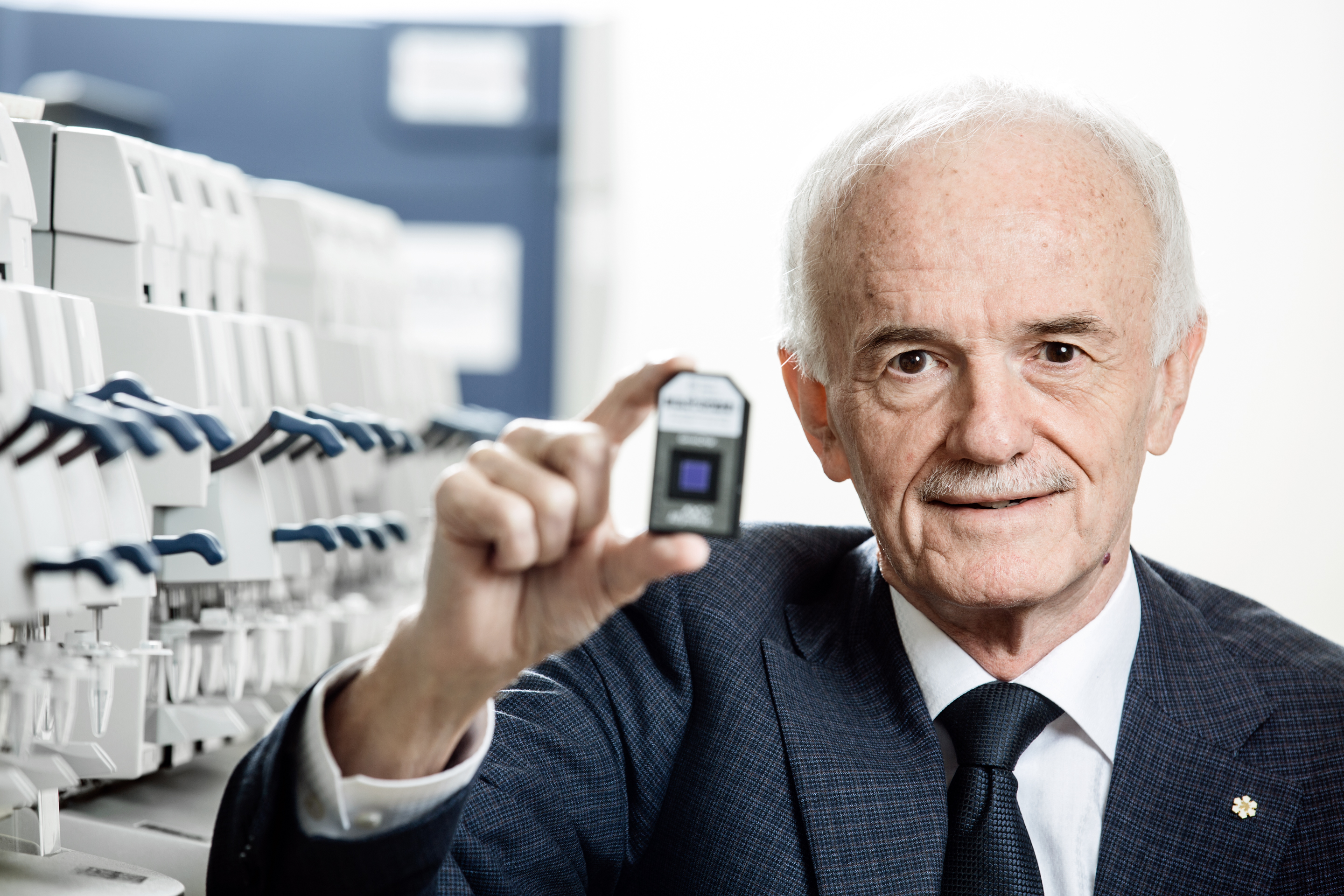
Philip Halloran is Founder, Alberta Transplant Applied Genomics Centre;
Muttart Research Chair in Clinical Immunology;Professor, Department of Medicine, Division of Nephrology and Adjunct professor, Department of Medical Microbiology & Immunology.
As a medical student more than 30 years ago, watching up to 55 per cent of transplant patients experience organ rejection and many lose their lives, Philip Halloran was fuelled by the desire to make a difference. Since then his work has defined our modern understanding of organ rejection, cutting the rejection rate to less than 10 per cent and reducing mortality.
Improving survival rates with new drugs
To help offset the negative side-effects of anti-rejection drugs post-transplant, Halloran led the development of new anti-rejection companion drugs, such as mycophenolate mofetil (Cellcept™). The combination of Cellcept with other drugs formed the basis of the drug protocol most widely used today when treating transplant patients and is estimated to add years to the survival of more than one million patients with organ transplants worldwide.
For this work, Halloran was honoured with the 2016 Prix Galien in Research, considered the Nobel Prize of pharmaceutical research in Canada.
Revolutionary biopsy-reading invention
Halloran and his team developed the Molecular Microscopic® Diagnostic (MMDx) system, a tool that relies on precise gene expression (microarrays) rather than microscopes to enable more accurate diagnoses of why a transplanted organ is rejected, and safer collection of biopsies of those organs.
Centres from around the world now send their biopsies to Halloran's lab in Edmonton, and his spinoff company Transcription Sciences Inc. announced an exclusive licensing agreement with One Lambda, a Thermo Fisher brand, in June 2017.
Understanding and preventing organ transplant failure his life's work
For many years, Halloran studied the ability of antibodies made by patients to damage the little blood vessels in transplanted organs. The MMDx system revealed the extent of this problem, showing that antibody-mediated rejection is the major mechanism causing graft loss post-transplant.
In December 2016, Halloran was recognized for his innovations in transplantation sciences with a Doctor Honoris Causa from Paris Descartes University.
Precision medicine beyond transplant
Because the MMDx tool can be used to determine whether certain anti-rejection drugs are working, it is poised to support more personalized, effective treatment for transplant patients. It is also being considered by researchers in different fields of medicine, such as cancer and ulcerative colitis, to predict which patients will respond to different treatments.
"We are not just creating tests - we're changing the concept of disease and seeing for the first time how molecular changes in disease predict and direct responses to different therapies," said Halloran.